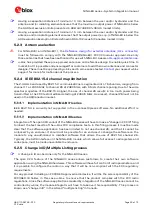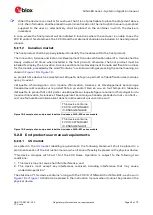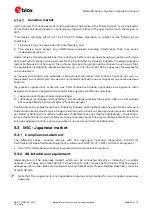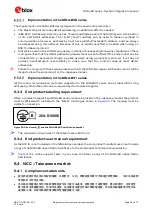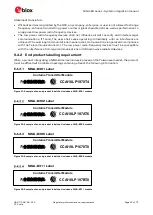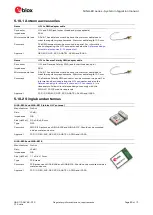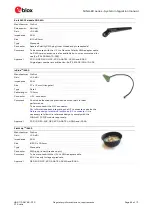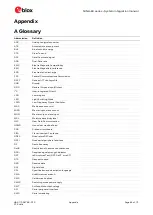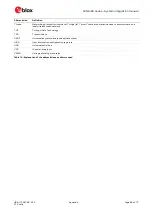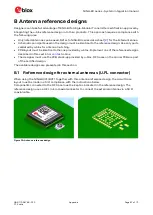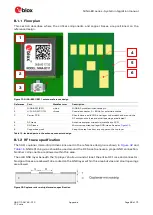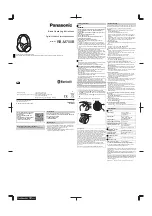
NINA-B3 series - System integration manual
UBX-17056748 - R13
Product testing
Page 64 of 72
C1-Public
6.2
OEM manufacturer production test
As all u-blox products undergo thorough in-series production testing prior to delivery, OEM
manufacturers do not need to repeat any firmware tests or measurements that might otherwise be
necessary to confirm RF performance. Testing over analog and digital interfaces is also unnecessary
during an OEM production test.
OEM manufacturer testing should ideally focus on:
•
Module assembly on the device; it should be verified that:
o
Soldering and handling process did not damage the module components
o
All module pins are well soldered on application board
o
There are no short circuits between pins
•
Component assembly on the device; it should be verified that:
o
Communication with host controller can be established
o
The interfaces between module and device are working
o
Overall RF performance test of the device including antenna
In addition to this testing, OEMs can also perform other dedicated tests to check the device. For
example, the measurement of module current consumption in a specified operating state can identify
a short circuit if the test result deviates that from that taken against a
“Golden Device”.
The standard operational module firmware and test software on the host can be used to perform
functional tests (communication with the host controller, check interfaces) and perform basic RF
performance testing. Special manufacturing firmware can also be used to perform more advanced RF
performance tests.
6.2.1
“Go/No go” tests for integrated devices
A “Go/No go” test compares the signal quality with a “Golden Device” in a location with known signal
quality. This test can be performed after establishing a connection with an external device.
A very simple test can be performed by just scanning for a known Bluetooth low energy device and
checking the signal level.
These kinds of test may be useful as a “go/no go” test but not for RF performance measurements.
This test is suitable to check the functionality of the communication with the host controller and the
power supply. It is also a means to verify if the components are well soldered.
A basic RF functional test of the device including the antenna can be performed with standard
Bluetooth low energy devices as remote stations. The device containing the NINA-B3 series module
and the antennas should be arranged in a fixed position inside an RF shield box to prevent
interferences from other possible radio devices to get stable test results.

